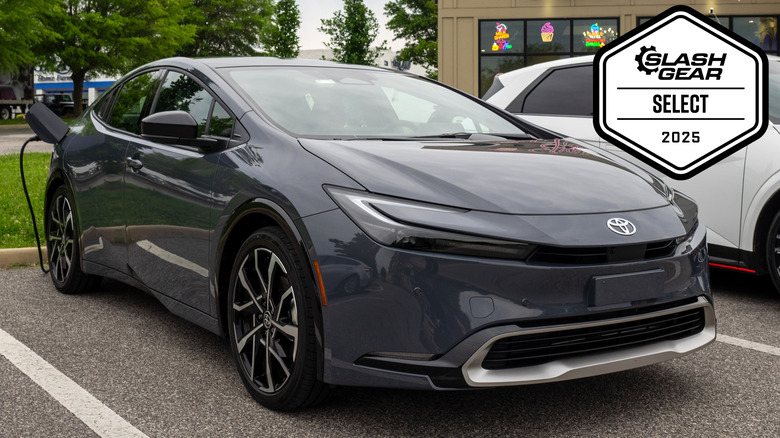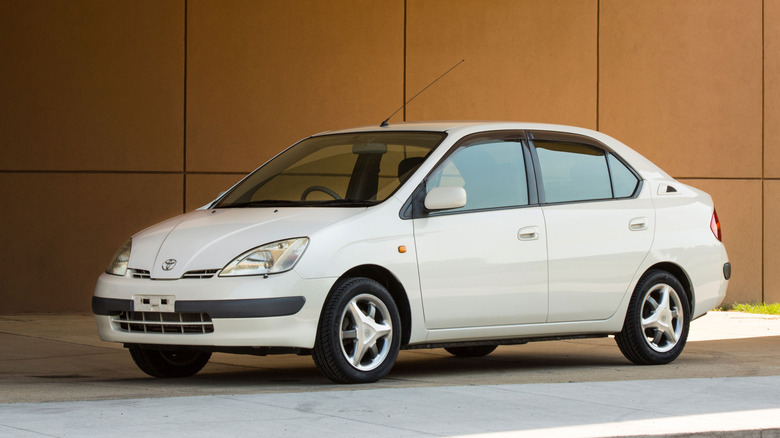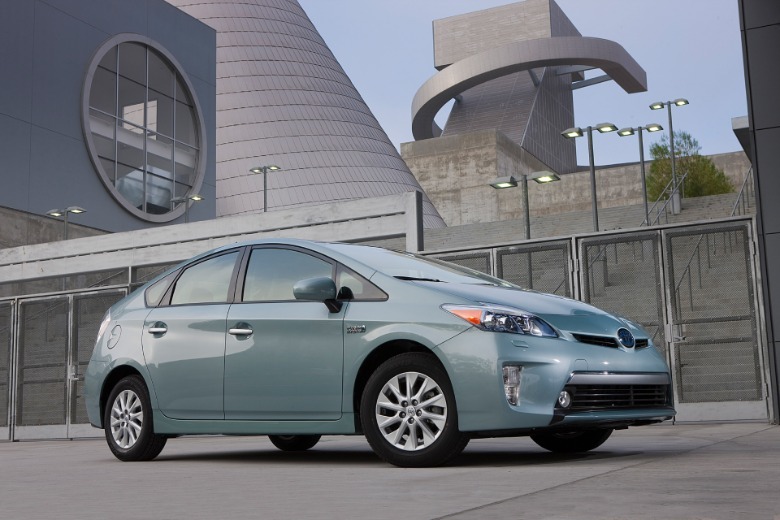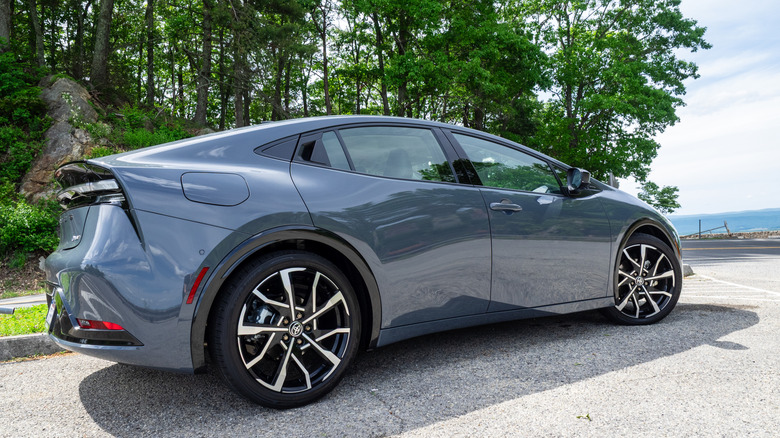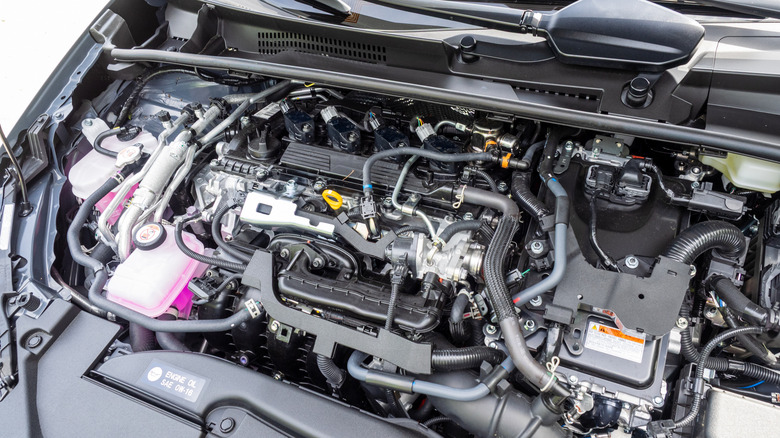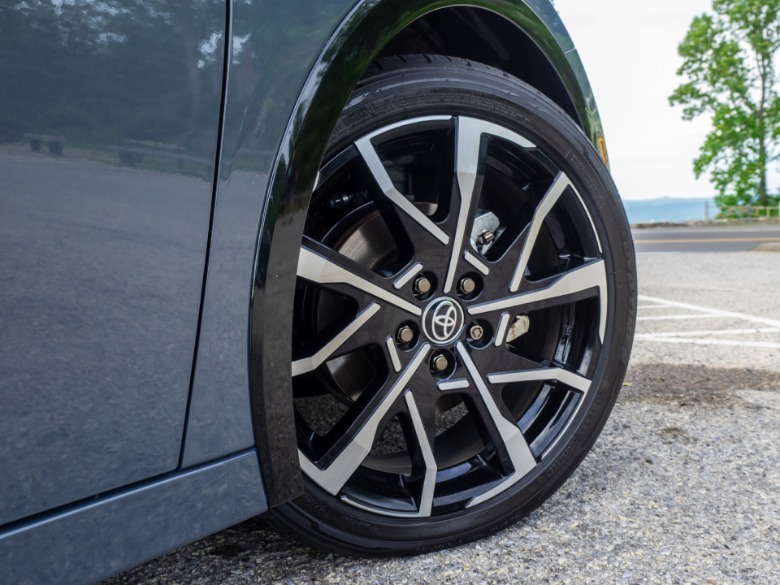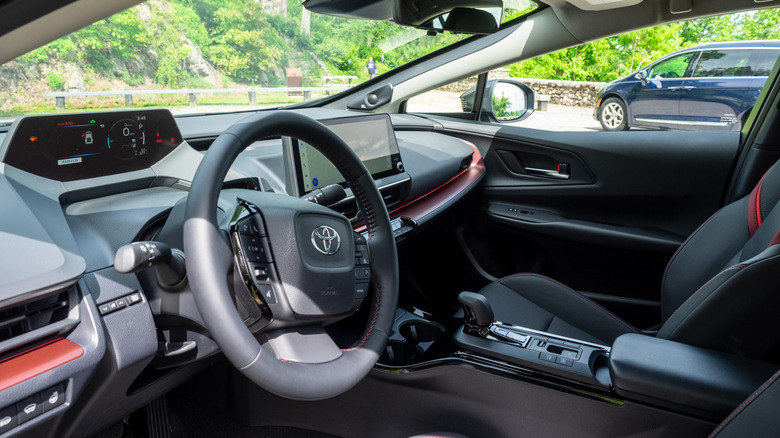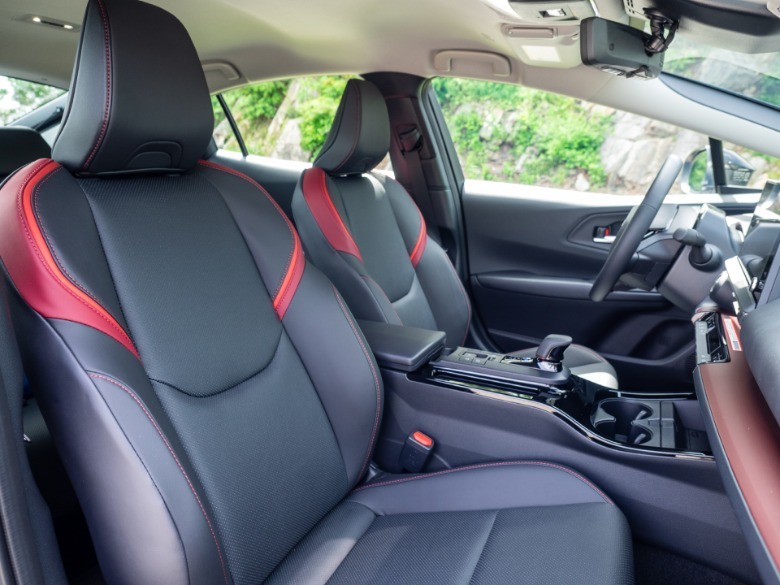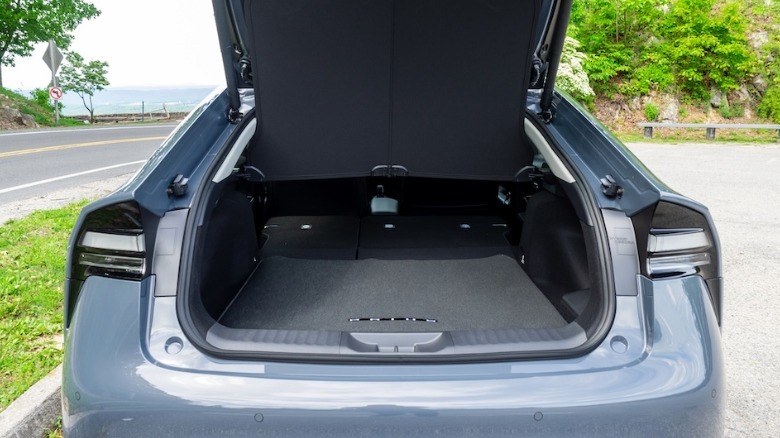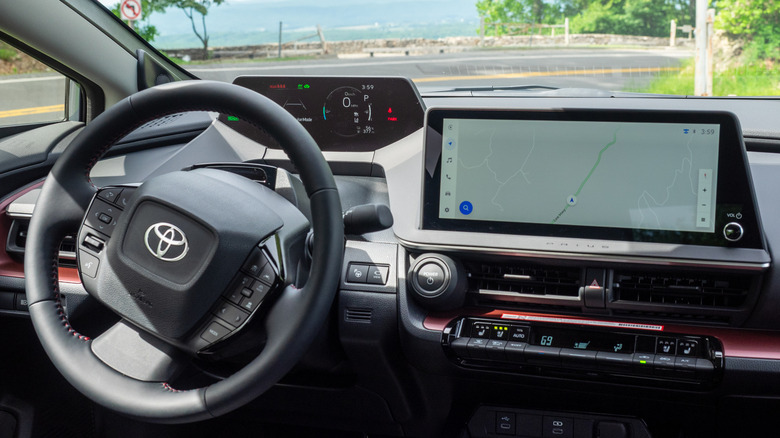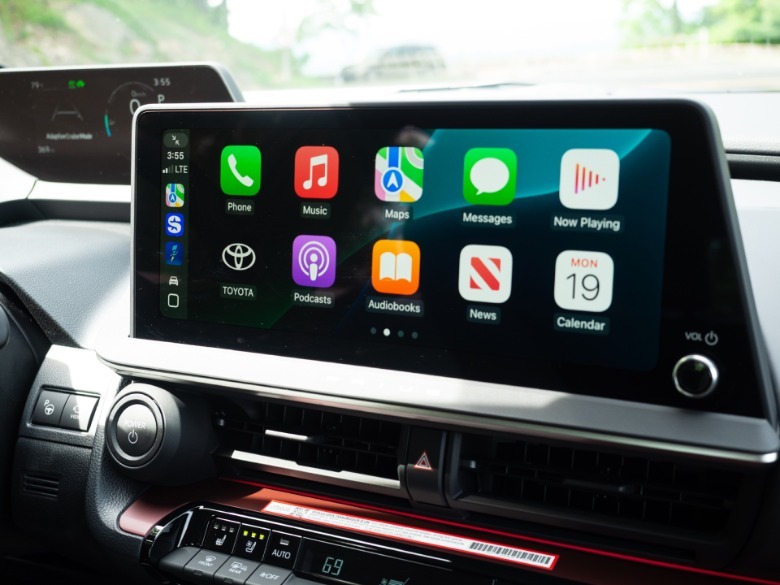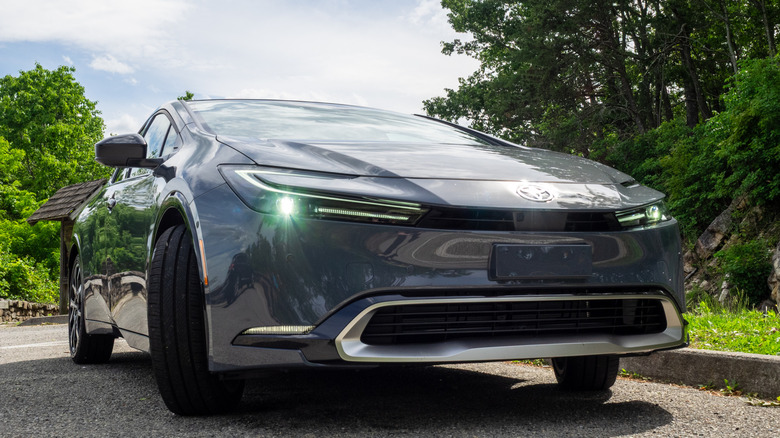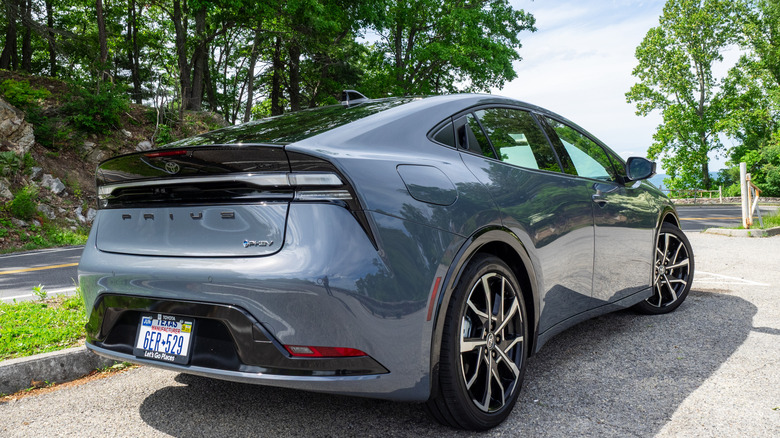2025 Toyota Prius Plug-In Hybrid Review: A Prime Example Of Going Electric Gently
- Head-turning styling befitting of an icon
- Dashboard is easier to use than before
- Excellent overall range and fuel economy
- Low roofline not so great for taller adults
- Gas engine sounds underwhelming when accelerating
- Fewer options and drivetrain configurations compared to non-PHEV Prius
Once upon a time, the Toyota Prius was an odd little hybrid few noticed when it arrived in the United States at the turn of the millennium. It was only near the mid-2000s when the-hybrid-that-could finally started doing so, arguably becoming as much of an icon as the Corvette, the Mustang, and the Jeep Wrangler. Though it has more competition today than it did all those years ago, the Prius is not only Toyota's best-selling hybrid, it is the best-selling hybrid in the world and in the United States; some 6 million have been sold over the course of nearly three decades.
Recently, I got to spend a week with the iconic hybrid in its PHEV form, the recently renamed-for-2025 Toyota Prius Plug-in Hybrid (formerly the Prius Prime). What would it be like to drive this starship over the roads and highways in and around my Old Dominion home in Southwestern Virginia? Probably not like what Denny Hamlin and Bubba Wallace experience behind the wheel of their NASCAR Cup Toyota Camrys (despite the similar front fascias), but, perhaps, an experience just as good.
Plugging into the future
When most think of the Prius, the above doesn't come to mind in the slightest. Yet, nearly 30 years ago in December of 1997, this is what rolled into showrooms in Japan. It wouldn't be until the 2001 model year that the United States would meet this unique offering from Toyota for the first time, seated between the smaller Echo and larger Corolla.
The iconic (and, perhaps, genre-defining) shape we all see in our mind's eye when even the word "hybrid" is mentioned didn't arrive until its world debut at the 2003 New York Auto Show, followed by its showroom release for the 2004 model year later that fall. That version moved up in size, landing between the Corolla and the Camry. Its Kammback styling, a smaller battery pack, and an all-electric A/C compressor combined to make the second-gen Prius one of the cleanest (emissions-wise) cars on the road according to the EPA and the California Air Resource Board (CARB).
The plug-in hybrid version of the Prius began its road to the marketplace with studies in 2008, resulting in a concept version debuting at auto shows in Tokyo, Frankfurt, and Los Angeles in 2009. A fleet of 600 pre-production units took the streets around the world in late 2009, leading up to the production version's world debut in Frankfurt in 2011, followed by its entry into the U.S. market in 2012. The next-gen Prius PHEV (developed alongside the standard Prius on the Toyota New Global Architecture) showed up in lots in January of 2016, carrying the Prius Prime moniker all the way until the end of the 2024 model year, two model years into the fifth and current generation.
Overlapping pricing make for difficult decisions
For 2025, the standard Toyota Prius starts at $28,350 for the LE trim with $1,135 destination fee. By the time you reach the XLE AWD trim's base MSRP of $33,195 you'll be on the doorstep of the starting price for the base Prius Plug-in Hybrid trim level, the $33,375 SE (both before destination). The standard hybrid Prius offers eight trim levels with either front- or all-wheel drive, the last three trims (Nightshade Edition AWD, Limited, and Limited AWD) overlapping in starting MSRP with the Plug-in Hybrid SE's and XSE's MSRPs (the XSE PHEV starts at $36,625 plus destination, the Limited AWD hybrid begins at $36,765 plus destination).
The Plug-in Hybrid XSE Premium is the priciest Prius of any type for the 2025 model year, starting at $40,070 plus destination. As-tested, our XSE Premium in Guardian Gray had a total sticker of $43,849. The question, then, is how much do you want to spend on a Prius, and whether or not you are fine with a standard hybrid, or want to plug it in? That decision may come down to the variety found in the standard Prius, or the desire to continue on the transition towards total electrification with the Prius Plug-in Hybrid.
As for why the plug-in Prius dropped its "Prime" surname for 2025, Toyota said it was "intended to help consumers more easily identify the powertrain choices" among 2025 Prius models; Toyota offered the same explanation for RAV4 Prime's rename to RAV4 Plug-in Hybrid for the 2025 model year.
Plug in to more power
No matter if you opt for the standard hybrid or the PHEV, the 2025 Prius comes with the same M20A-FXS 2.0-liter four-cylinder across the line; this engine is also in the Lexus UX Hybrid models, as well as the Toyota Corolla Hybrid, Corolla Cross Hybrid, and C-HR Hybrid. The difference is how much power gets put down to the open road, though.
The Prius Plug-in Hybrid augments its 2.0-liter with a 161-horsepower AC synchronous motor, delivering a total output of 220 horsepower and 139 lb-ft of torque to the front wheels only; the standard Prius only has 194 to 196 horsepower and 139 lb-ft of torque with its electric motor to work with, in comparison. That power takes it to the streets via an electronic continuously variable transmission (eCVT), plus three drive modes (Sport, Eco, and Normal) and three powertrain modes (EV, Auto EV/HV, and Hybrid) to make the most of what's up front.
The SE trim wears a set of 17-inch alloys with wheel covers, while the XSE and XSE Premium (like the one we tested) steps it up with 19-inch alloys wrapped in Toyo Extensa A/S II all-seasons, adding more sportiness to an already attractive spaceship of a car. A set of 12-inch front and 11-inch rear discs not only stop the PHEV, but help charge up the 10.9-kWh lithium-ion battery when whoa-ing things up down the mountain roads to the stoplight. Front MacPherson struts and rear multi-link suspension plus front and rear stabilizer bars help this Prius handle all of those turns and whatever bumps come along with relative ease.
All aboard the Starship Prius
Most car interiors feature a conventional-for-the-times dashboard. Not the Prius. From the very beginning in the late 1990s, Toyota's iconic hybrid has always had a different take on where things should be placed. Up until the current generation, all of the driver gauges were placed in the center. With a larger center touchscreen coming into play near the end of the previous generation, such positioning was no longer tenable. Thus, those gauges are now behind in the conventional steering-wheel placement.
Of course, it wouldn't be a Prius if that placement were truly traditional, though. Instead, it's placed forward in a spot where other vehicles would have a head-up display. And, while there is no HUD for the Prius Plug-in Hybrid, the gauge placement more than makes up for that.
Behind the starship-esque controls are more conventional creature comforts. The front seats on the 2025 Prius Plug-in Hybrid XSE Premium are trimmed in black SofTex with red stitching and a smidgen of red-and-orange sunset-striping hugging the tops of the back rests. Both seats are heated and ventilated for year-round coziness, though only the driver gets eight-way power-adjustable seating; the front passenger will have to adjust everything manually. The rear 60/40-split bench isn't as colorful but, for an extra $350, can keep passengers warm with heating for the coldest days.
Speaking of comfort, though, the main issue is that low roofline, which for tall adults or those who prefer the ingress/egress of crossovers and trucks (like my mom), may prove to be a bit of a challenge. Meanwhile, cargo space ranges from 20.3 cu-ft to 26.7 cu-ft, depending on the rear seat backs' positioning. It's not too bad for most errands, but the 2025 RAV4 Plug-in Hybrid might be a better option for more carrying capacity.
But not too starship, though
Aside from the 7-inch digital gauge cluster parked in the HUD position, the 2025 Toyota Prius Plug-in Hybrid also boasts a massive 12.3-inch center touchscreen display filled with wireless Apple CarPlay and Android Auto, a three-month trial of SiriusXM, and Toyota's Connected Services suite of subscriptions. For an additional $1,085, you can add a 360-degree surround-view system to make parking easier. You can also change the color of the overhead Prius icon of that system to match the color of your Prius, which I did as soon as I discovered it while digging through the settings.
HVAC and radio controls are, thankfully, still in the human world via a row of buttons, switches, and one knob along the center console and embedded in the steering wheel. Phone charging is handled either through the wireless device charger up front, or through six USB-C ports running from above the wireless charging pad, down the center console, to the rear.
Whether rolling quietly down the street to work or charging up the battery on the highway, the eight-speaker JBL stereo system was there to make my favorite voices sound their best. Standard safety features include Toyota's Safety Sense 3.0 with Pre-Collision, blind-spot monitoring, adaptive cruise control, cross-traffic alert, and more. Traffic Jam Assist with low-speed hands-free steering during highway congestion is available via subscription.
Charge it (if you want)
One of the benefits of a PHEV like the 2025 Toyota Prius Plug-in Hybrid is the ability to add electrons a number of ways if silent running is desired. Fully charged, the lithium-ion pack delivers between 39 (XSE and XSE Premium) and 44 (SE) miles, perfect for early morning drives to work when all is still on the streets. The first way is to use the 2.0-liter four-cylinder in charge mode, which means having to hear the rather noisy engine do its business. The rather displeased grunt of that engine made me wish more than a few times that the Prius overall was just an EV; a GR Corolla this will never be.
The next — and better — way to charge up that pack, though, is by plugging in. At a Level 2 charger it'll take 2.5 hours go from 0% to 100%. That speed isn't linear, mind: having used the engine to top it up to its gas-charging cutoff of 80%, it then took about an hour to go from there to full. There's no Level 3 DC fast charger support, and if you only have your standard 110V household outlet to handle the job, though, charging will take 11 hours. Good thing gas stations are plentiful, then. The optional $610 185-watt solar panel roof could contribute up to around six miles of electric range a day at max charging capacity, Toyota says.
With everything charged up, combined city/highway mileage is an EPA-estimated 114 MPGe/29 kWh per 100 miles. On gas alone, it's 48 mpg combined/2.1 gallons per 100 miles. My final total was 36.7 mpg, as a lot of my driving involved the gas engine moving the front wheels and charge the pack. Overall combined range is 600 miles, perfect for long-distance travel. And it only needs regular 87 octane, so less pain at the pump overall.
2025 Toyota Prius Plug-in Hybrid Verdict
Spending a week with the 2025 Toyota Prius Plug-in Hybrid, this latest version of the iconic hybrid definitely found itself a few fans, including those shopping for their own. The stunning looks are a plus, and the interior isn't too bad, either. Subscriptions, of course, put a dent into the overall experience, as does the displeased grunt of the four-cylinder when you put the hammer (gently) down.
If you don't have any way to charge at home (like me with my current lack of such a setup), it's probably best to buy the standard hybrid Prius over the PHEV version. You'll still have the excellent fuel economy the Prius has always been known for, without the worry and hassle of charging to get the benefits of a hybrid. The pricing and limited trims compared to the aforementioned regular Prius might be a harder sell for some consumers to consider the plug-in version, too.
Whether you choose to plug-in or not, though, the fifth-generation Prius has come a long way from the odd, dowdy little hybrid it was back in the days of Clinton, electronica, and the first Apple iMac.
